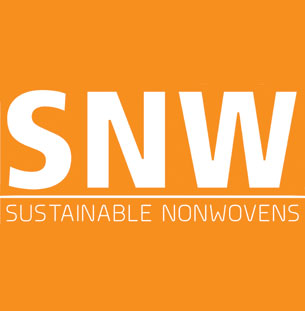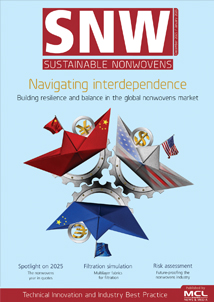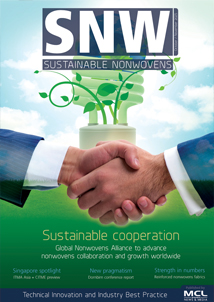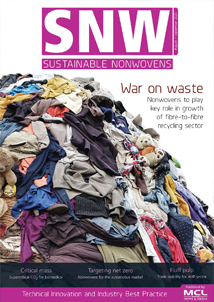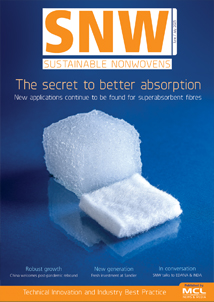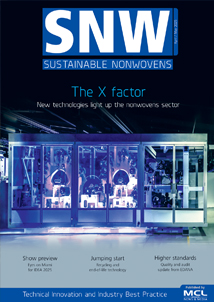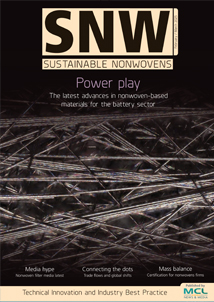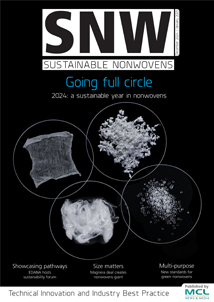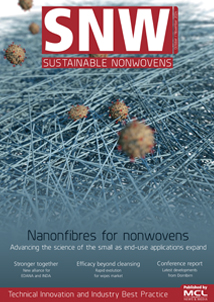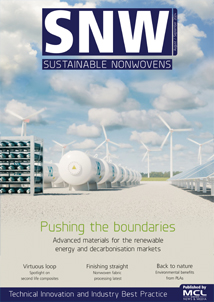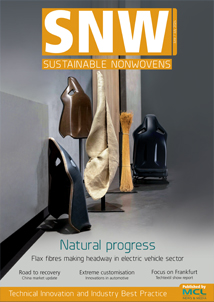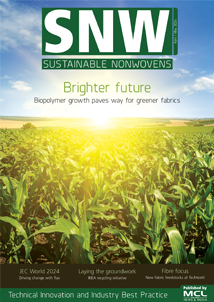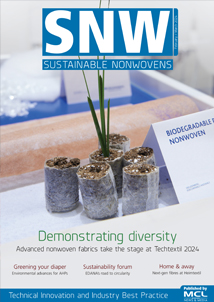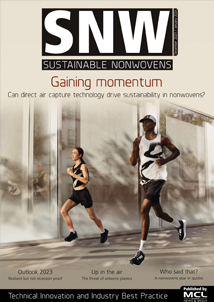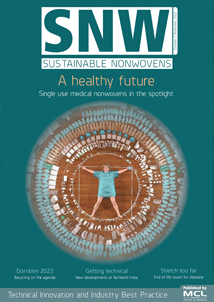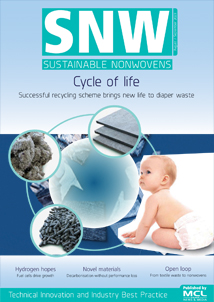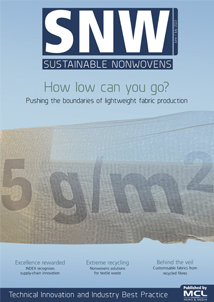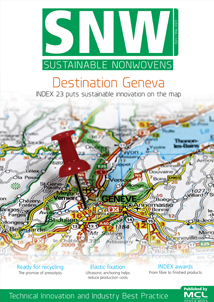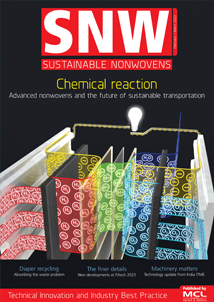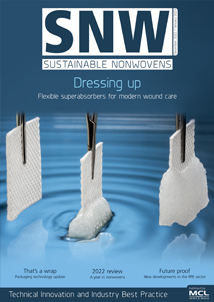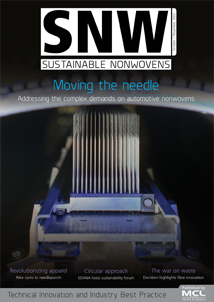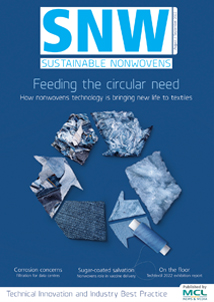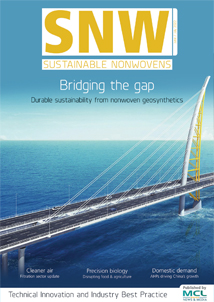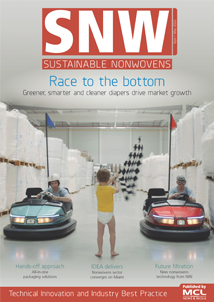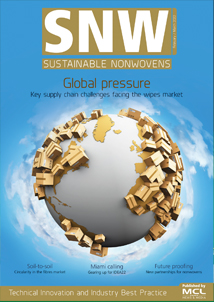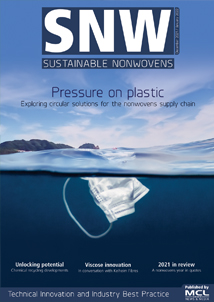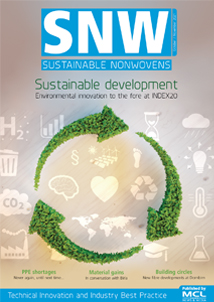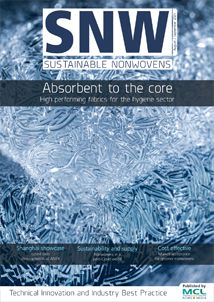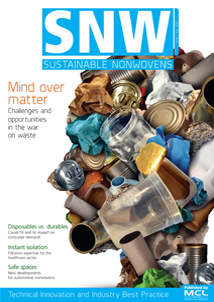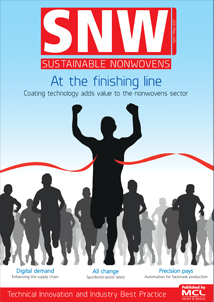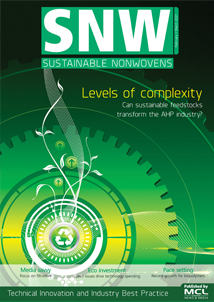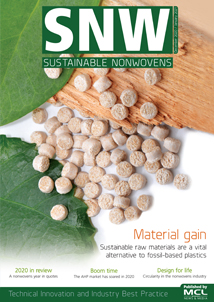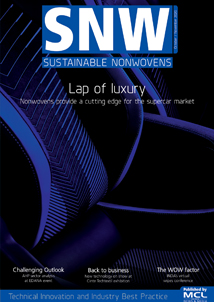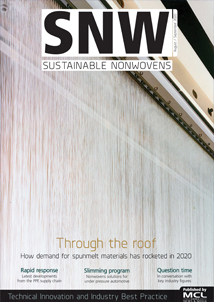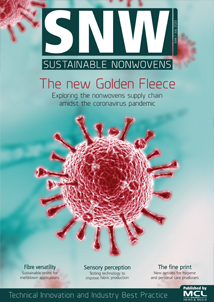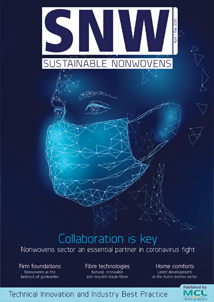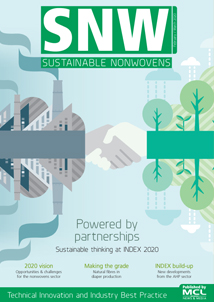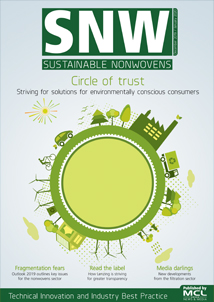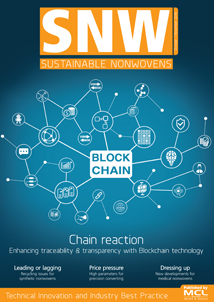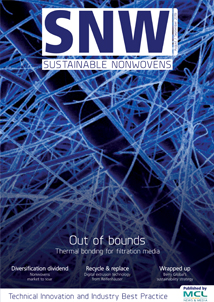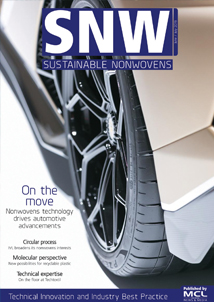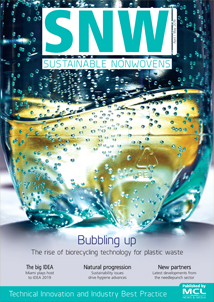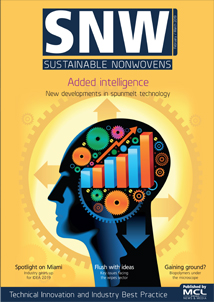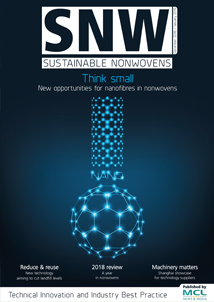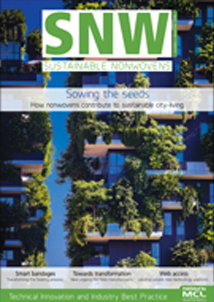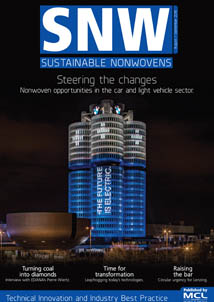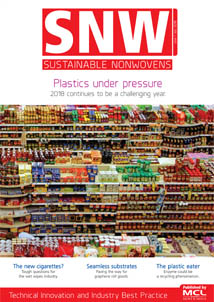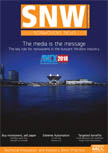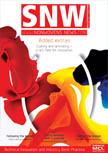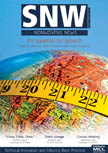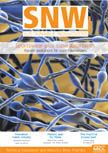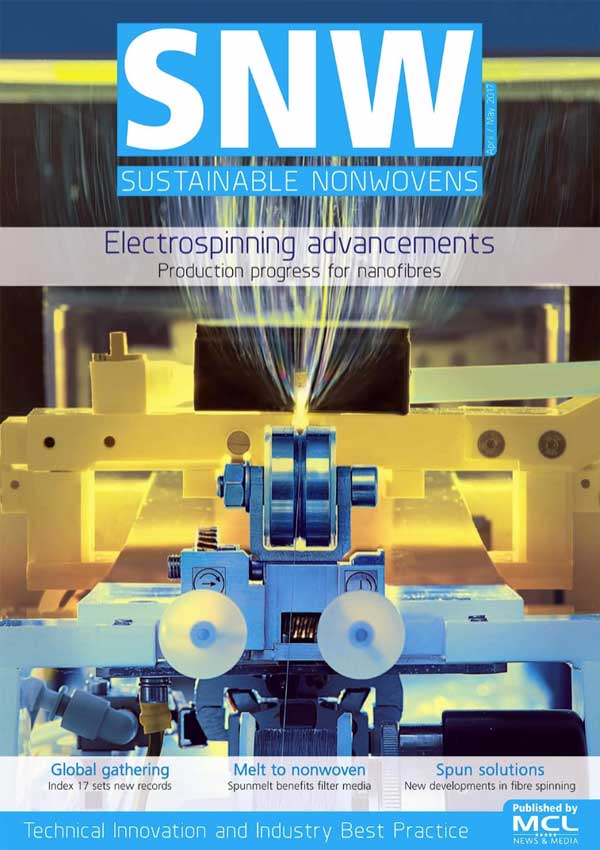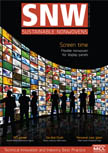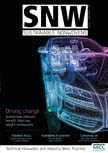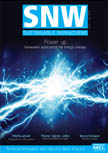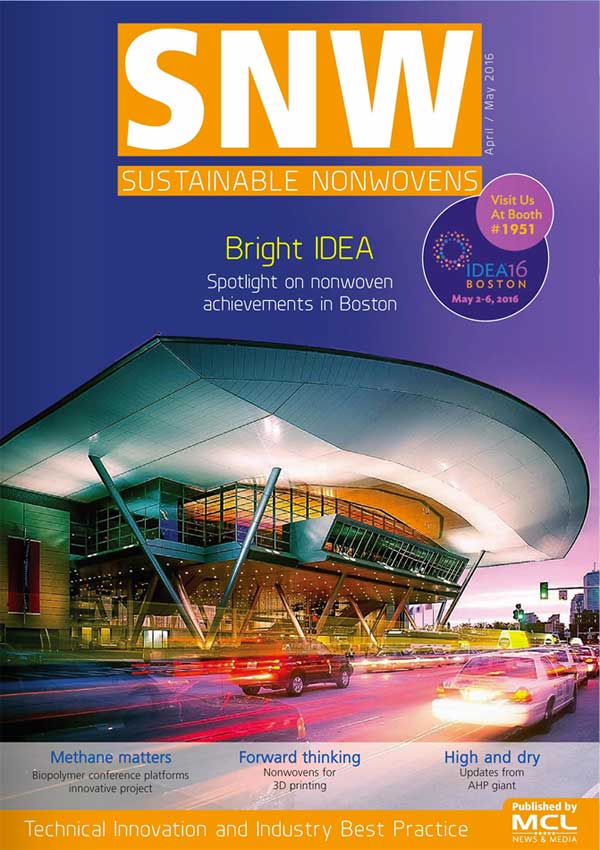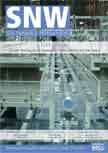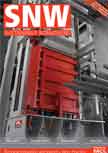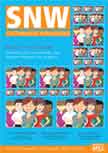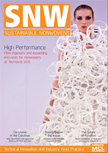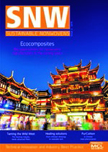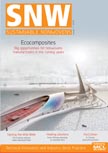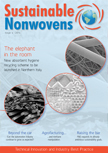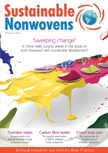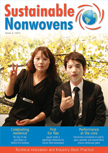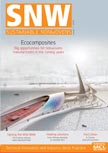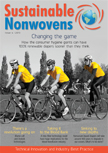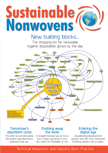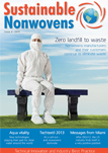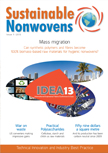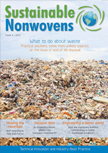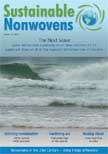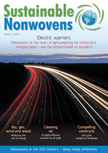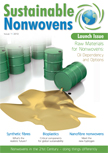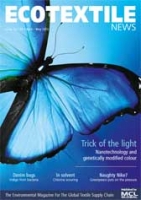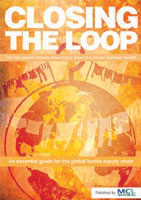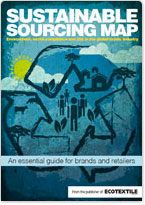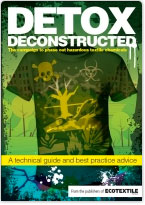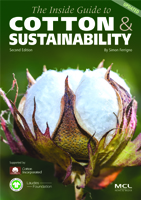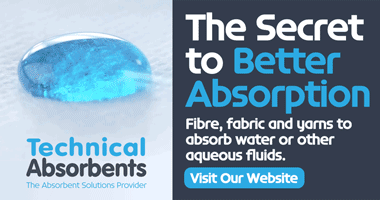In the run-up to the upcoming EDANA Circular Nonwovens Forum, SNW caught up with speakers Abby Turner, Senior Marketing Manager, Dow Europe, and Eduardo Alvarez, Application Technology Leader, Dow Europe
Haydn Davis: Over the last decade, issues surrounding sustainability have not necessarily been at the forefront of the nonwovens industry. This is clearly changing now with many companies throughout the supply chain adapting their working practices to come into line with this growing trend. How has Dow reacted to the growing demand for a more sustainable nonwoven industry?
Abby Turner/ Eduardo Alvarez: We have been working on the development of sustainable products for quite a while now, so we are very happy to see that consumer demand and awareness in the industry is growing, as you mentioned.
Our focus is actually driven through 4 pillars with strong emphasis on design for recyclability and resource efficiency. Recycling diapers and feminine hygiene products has it challenges. Most of the products use multi-layer, mixed polymer film structures which are typically difficult to recycle. The use of mono-materials can simplify the separation process during recycling, and we believe PE is the best choice for that material. “Design for recyclability” stands for our vision of a mono-material structure design and allows us to introduce a polyethylene-based offering for practically every component of both diapers and feminine hygiene product.
We are exploring and evaluating new technologies for feedstock recycling and are already committed to the use of renewable feedstocks such as bio-based materials, commercially available, demonstrating our strategy and our engagement in providing sustainable solutions.
HD: Can you summarise for our readers the main focus of your presentation at the upcoming Circular Nonwovens Forum?
AT/EA: We will talk about one of the major challenges for the nonwovens industry: the post-consumer waste and recycling of Absorbent Hygiene Products (AHP). Today, most of this potentially valuable material is lost to landfill and incineration, calling for new approaches that can support a shift towards a circular economy. We will talk about new approaches to accelerate recycling opportunities for AHP through design-to-recycle material solutions that have the potential to significantly improve the quality of PCR, and the production of bio-based polymers using renewable naphtha as well as circular polymers using feedstock recycling.
HD: What role does Dow play when it comes to contributing to an effective recycling system for AHPs?
AT/EA: We know we need to work with the whole value chain and have been doing so for many years now, but as a resins producer and an experienced player in the industry, we work on developing resins, film structures and production technologies that facilitate the recycling process. The key is truly collaborating with all players in the value chain, with a common goal and with that you can design with the ‘end in mind’ and maximize the impact for all parties including of course the consumer.
HD: Can you briefly outline some of Dow's innovations in this area?
AT/EA: I think that the best example is our EXTREME PE diaper 2.0 – a diaper prototype that uses a much higher Polyethylene content than what you can find in commercially available products: a conventional diaper contains 4-8% PE, whereas our Extreme PE 1.0 diaper contains 33 % and the Extreme PE 2.0 diaper 42%. An evolution from diaper 1.0, it features an extensible, fluffless, innovative absorbent core that enables a simplified, recycle friendly diaper design, without compromising the liquid management performance.
This project is the result of many collaborations with customers to provide-market-driven solutions that consumers demand. The trends of comfort – which starts with softness, durability, discreetness and reduced skin irritation - are still important but sustainability is moving up on the list.
And as mentioned before, a PE mono-material is potentially more sustainable because it simplifies the recycling process by reducing the need to separate out mixed materials.
HD: As we know the issues surrounding recycling of AHPs is a very complex process. Perhaps you could outline what the main challenges are in relation to an effective recycling system?
AT/EA: There are two main challenges, in our opinion: one the fact that hygiene products are using mostly using different products in the different components and its separation is not easy. The use of mono-materials can simplify the separation process during recycling in the future and create a cleaner recyclate for further processing and circular solutions.
And the second, additional challenge with recycling hygiene products, is that they contain human/biological contamination that must be addressed. Our understanding is that there are recycling companies that have developed processes to sterilize the used-diapers and make them safe for the next steps of recycling.
HD: When establishing an effective recycling system, how important is it to ensure that the environmental savings are greater than say the emissions that are necessary for processes such as waste collection, separation and treatment processes?
AT/EA : That is a very good point. We use Life Cycle Analysis (LCA) to study which are the production and recycle methods to reduce the CO2 footprint of a diaper. These are tools we use to ensure we are either carbon neutral or negative by design.
HD: Are there any other future plans that you would like to share with our readers?
AT/EA: We are obviously sad, like many partners, not to be able to meet at Index this year where we were going to showcase our latest prototype but development continues in all of our four pillars pertaining to driving a circular economy and we would encourage anyone interested to reach out and contact us…
HD: How important are events such as the Circular Nonwovens Forum when it comes to raising awareness and progressing the issues around circularity in the nonwovens industry?
AT/EA: We believe in the power of collaboration. Only having open discussions can we achieve the sustainable goals that we have all set. Such forums are very informative and inspiring and bring the industry together, which is now in Corona times more important than ever.
The online Circular Nonwovens Forum takes place on 13 October from 13.00 to 15.00 CET. For further details CLICK HERE
